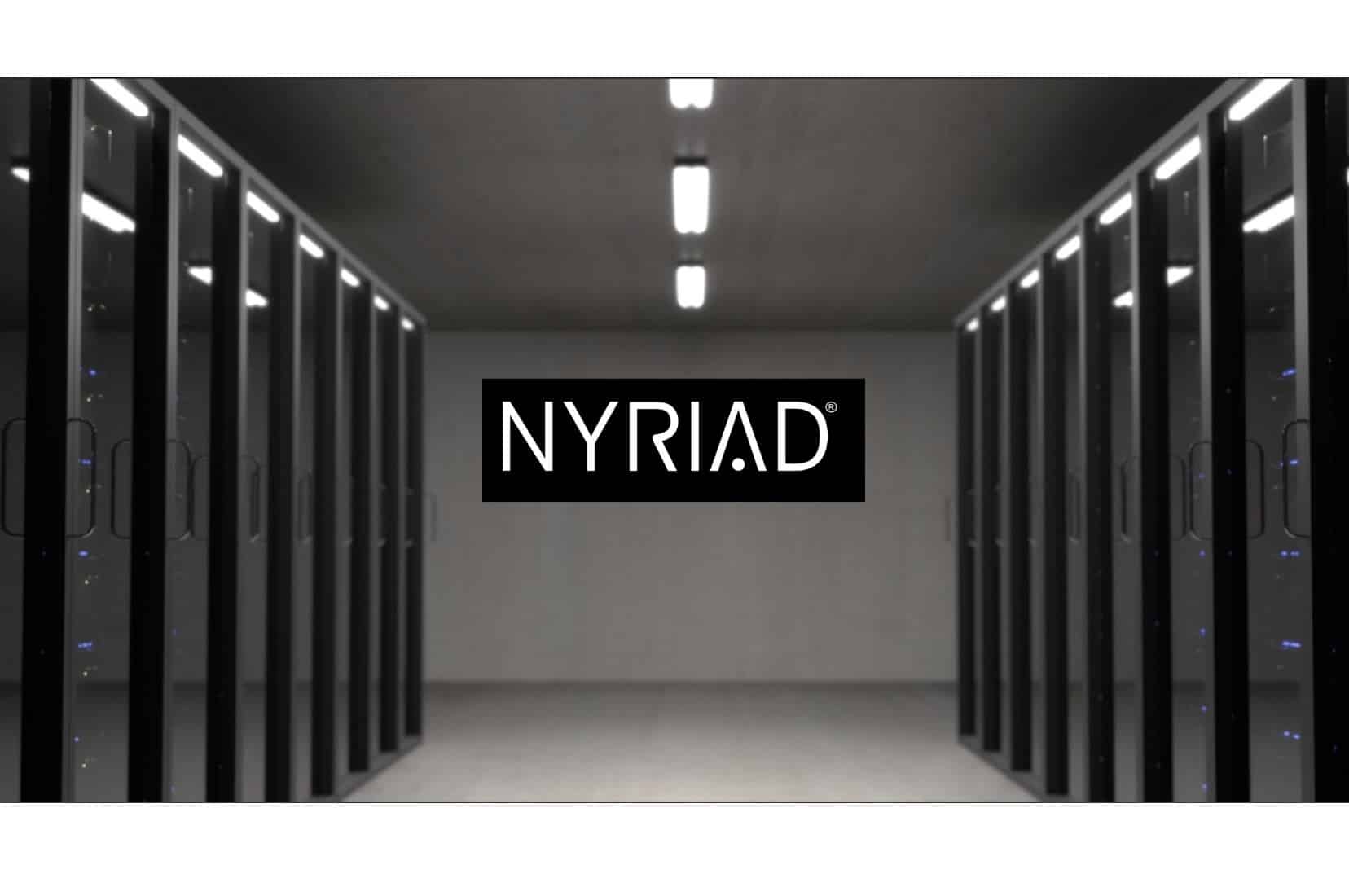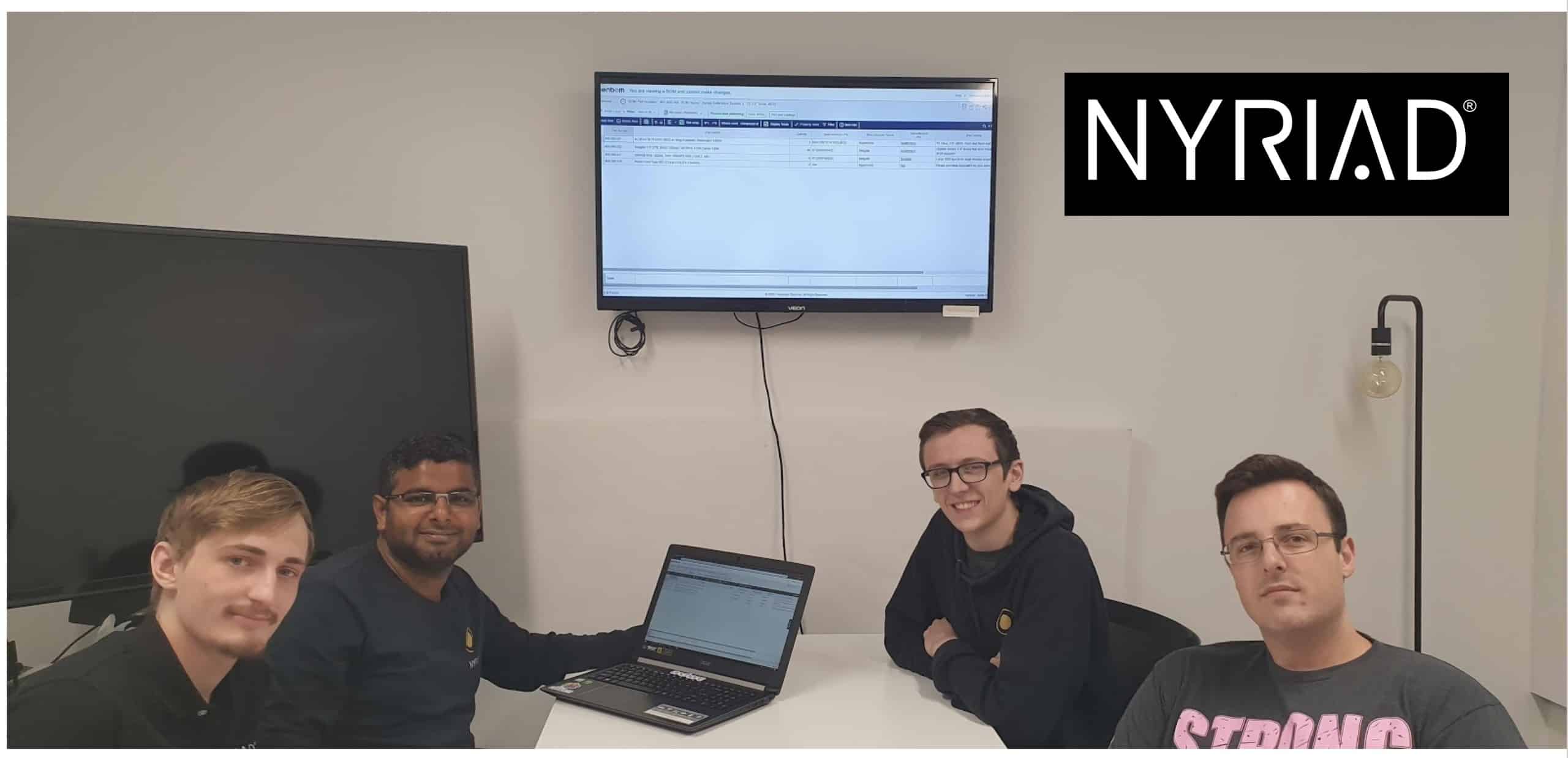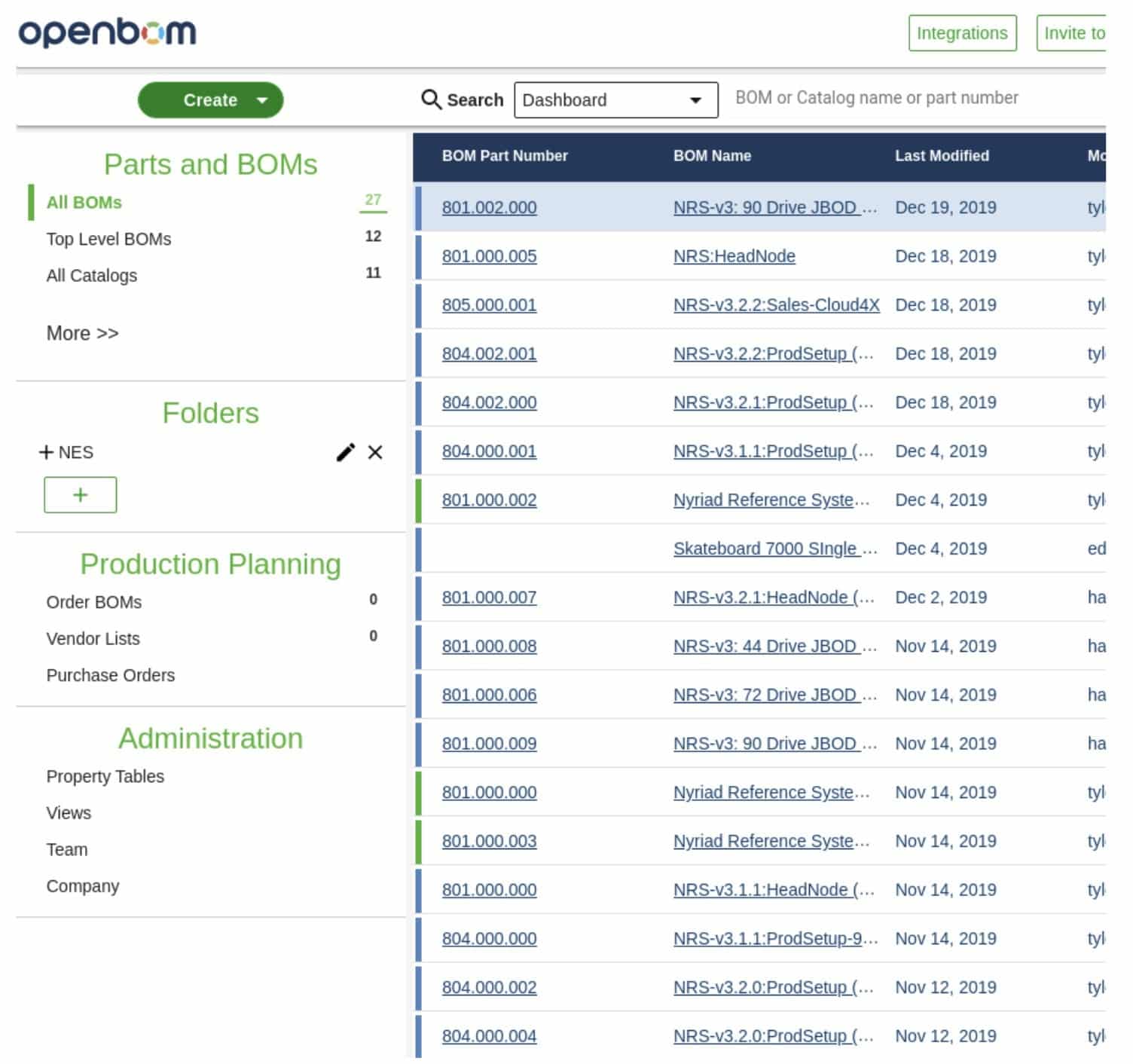
New Zealand’s Nyriad is a software company at the nexus of computational storage infrastructure. Together with OpenBOM and their partners, Nyriad develops technology that will enable a more robust, energy-efficient and secure Internet. They have spent the last 5 years carefully connecting the underlying threads between the CPU, GPU, Memory, and Storage to create a unified software-defined architecture, minimizing data movement and maximizing resilience.

Working with both traditional data centers and edge gateway deployments meant their hardware designs (and their ability to effectively communicate those designs) became more complex. Their early prototypes required architectural nuances that needed to be managed and organized. People at the site building the center needed to know which version of which component to install, and that was changing quickly during development.
“We tried using google sheets to manage components and specs which quickly became cumbersome as we scaled. It lacked the basic manufacturing functions we need. I did some research and after looking at several options, settled on OpenBOM,” says Manuvimal Mohan, QA Manager at Nyriad. “We started with the Free subscription then purchased a Company subscription when we went live with OpenBOM. We now use OpenBOM to share all specs and related information internally and with our customers and partners.”
Specifically, Nyriad relies on OpenBOM to keep track of which set of components goes with each build. As part of the delivery process, Nyriad supplies a specification to the client or customer which details their build. Simply put, prior to OpenBOM the Nyriad QA Team could not produce a “baseline” of the specification. Who and what should be sent to whom? They had lots of information about components, but it was hard to align it with a specific build.

Now Nyriad not only stores all specifications and related documentation in OpenBOM, but relies heavily on the manufacturing features in OpenBOM. “We love the BOM Multi-Level and Flatten capabilities as well as Catalog part number creation function” Manu goes on to say. “Flatten analyzes a complex BOM and tells us exactly how many of which components we need at the client’s site”.
Rachel Kelly, Nyriad Head of Marketing and Global IT Insight describes how Nyriad’s software unifies the four essential elements required to efficiently process and store data: CPU, GPU, Memory, and Storage. “Trying to unify those 4 key components is hard ” she adds. “OpenBOM helps us keep track of the underlying infrastructure that supports this unification.”
As a QA manager, Manu, welcomed the process-based method of capturing BOM to ensure the quality of BOM. “OpenBOM gave me the controlled environment which is needed to create a successful BOM of my reference specs. We can easily get a BOM based on a requirement or customer request…just get the right version and send it to the customer” Manu says.
Conclusion.
It is impossible to manage the level of complexity needed to develop the future of internet and high-tech technologies by relying on Excel and Google Spreadsheets. The complexity of product information – multi-level structures, specification, flattened features, and many others made OpenBOM an ultimate tool to ensure the quality of Bill of Materials and provide traceability between development, QA and customers.
To learn more about Nyriad please visit www.nyriad.com
Register for OpenBOM user subscription later today
Best, Oleg @ openbom dot com.
Let’s get to know each other better. If you live in the Greater Boston area, I invite you for a coffee together (coffee is on me). If not nearby, let’s have a virtual coffee session — I will figure out how to send you a real coffee.
Want to learn more about PLM? Check out my Beyond PLM blog and PLM Book website
Read OpenBOM customer reviews on G2 Crowd to learn what customers are saying about OpenBOM.
Join our newsletter to receive a weekly portion of news, articles, and tips about OpenBOM and our community.









